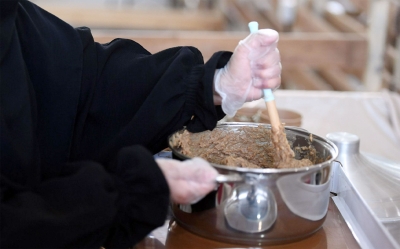
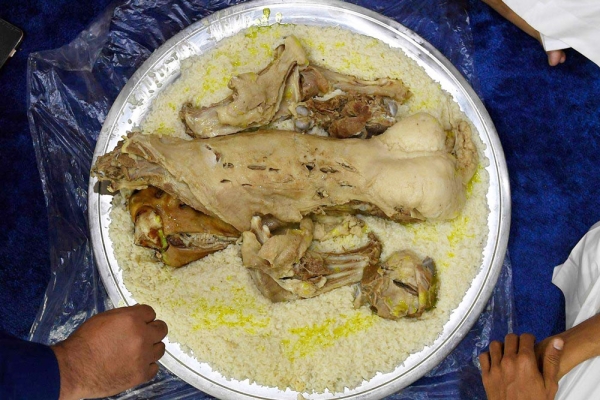
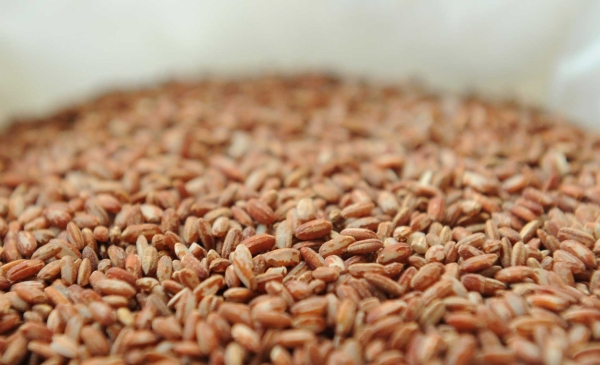
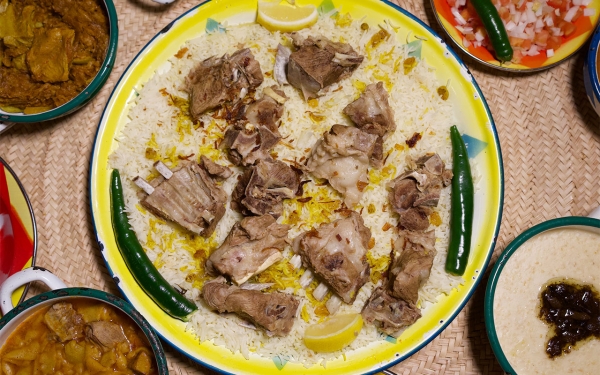
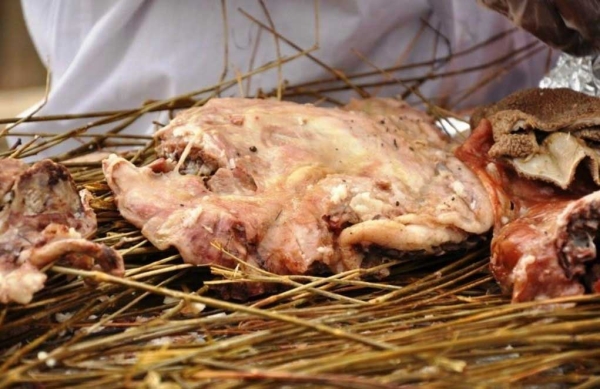
Saudi Kabsa
It is considered one of the easiest dishes to prepare technically, as all the ingredients are cooked or pressure-cooked in one pot. However, it reflects the expertise of the cooker in mastering the distribution of spices, how well the meats or added vegetables are cooked, and the perfection of cooking the rice.
Haneeth
Haneeth dish is associated with the Cissus quadrangularis and Leptadenia trees known in Aseer Province in the southwest of the Kingdom of Saudi Arabia. It is one of the famous dishes in the province and is often prepared outdoors in an iron pot or a sandy pit called al-Mihnidh. After lighting the wood inside and reaching a high and balanced temperature to cook the meat optimally, layers of Cissus quadrangularis are placed, then pieces of meat, followed by another layer of Cissus quadrangularis, and then covered with a piece of cloth before sealing al-Mihnidh tightly. The Haneeth takes about two hours to cook and is then served with rice.
Mandi
Its main ingredients rely on rice mixed with meat or chicken. The primary technique for preparing Mandi is cooking the meat in a tannour, a special type of oven, or in a circular pit inside the ground where the meat is placed and sealed with a cover, with clay placed around its sides to prevent heat leakage. These practices can be substituted with more modern and faster electric devices designed specifically to prepare labor-intensive foods. However, heritage enthusiasts adhere to the traditional method of preparing popular dishes using old tools.
Al-Hasawi Rice or al-Hasawi Rice Kabsa
Known locally and in the Gulf region as “al-Aish al-Ahmar," the red rice, preparing al-Hasawi rice depends on short-grain rice grown in al-Ahsa Governorate in the Eastern Province. Pumpkin and eggplant are added to it, along with several traditional spices, most notably sea salt. Cooking it takes between one to two hours. Al-Hasawi rice has a denser texture than regular rice, resembling the consistency of Harees and Saleeg. It is stored and served in containers that prevent cold air from entering to retain its heat for as long as possible. After cutting it into small pieces, meat can be added to al-Hasawi rice, often using lamb shoulder meat with bone cut into medium-sized chunks.
Saleeg
Its preparation relies mainly on short-grain rice, known locally as “Egyptian rice”, with the addition of milk. Cooking Saleeg takes between one to two hours until it attains a firmer consistency, resembling Harees and Jareesh. It is stored and served in containers to prevent cold air from entering, retaining its heat for as long as possible. Meat can be added to Saleeg. Roasted chicken is often added during the final presentation of the dish.
Related quizzes
Related articles
